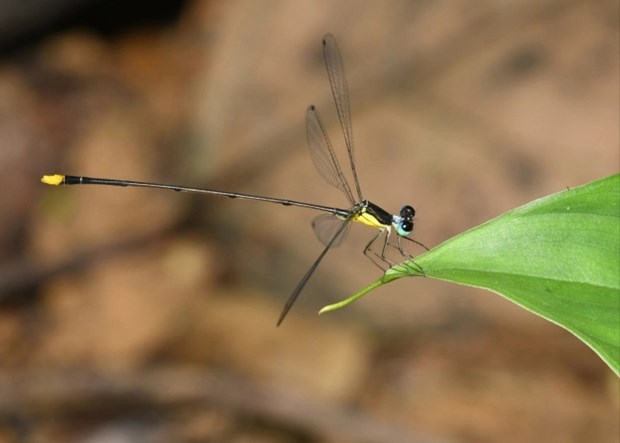
A new species of damselfly was recently discovered in two national parks in the neighbouring provinces of Nghe An and Ha Tinh in central Vietnam.
 |
A new species of damselfly was recently discovered in two national parks in the neighbouring provinces of Nghe An and Ha Tinh in central Vietnam.
Leaders at Ha Tinh’s Vu Quang National Park said researchers from Duy Tan University based in the central city of Da Nang and staff from Vu Quang and the Pu Mat National Park in Nghe An discovered the new damselfly Coeliccia natgeo, named after the US’s National Geographic Society, which sponsored the survey.
The discovery was published in the journal Zootax in late 2020.
In a short survey of certain areas in Vu Quang National Park in Huong Son district conducted in July 2018, Dr Phan Quoc Toan from Duy Tan University collected specimens that he believed were of a new species.
However, the low number of specimens and unclear data hampered any announcement.
In May 2019, Toan and other researchers unexpectedly found some male individuals of the species in Pu Mat. A year later, they recorded its presence in several areas of Vu Quang.
After gaining sufficient data and specimens, they announced the discovery of the species – whose full name is Coeliccia natgeo Phan, Ngo, Toan & Tuan, 2020 - with the holotype collected from the Khe Nhop area in Vu Quang National Park.
Coeliccia natgeo is the 8th member of Coeliccia hayashii, a damselfly group endemic to Vietnam.
It differs from other members by its males lacking antehumeral stripes, spots, and pruinosity on the synthorax and its females having the central part of the posterior pronotal lobe reduced to a small projection.
Via this study, the habitat of the Coeliccia hayashii group was confirmed to extend to the northern part of the central region. Species in this group were previously recorded only in the Central Highlands and Bach Ma National Park in Thua Thien-Hue province.
Earlier, a group of entomologists led by Toan also discovered two new damselfly species, Drepanosticta emtrai Dow, Kompier & Phan, 2018 in Vu Quang in 2018, and Prosaineura lancastrei Phan & Ngo, 2020 in Pu Mat last year.
(Source: VNA)





